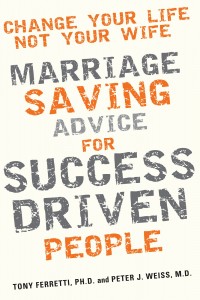I’ve had something in the back of my mind since I got home from the SHRM conference, and I am going to have to get it off my chest. If you’re not in the mood for a little rant, feel free to check out The Oatmeal for something funny.
One of the general session speakers at the conference was Tom Brokaw. I was not sure what to expect from the man when he got up to speak to an audience full of HR professionals, but I wanted to give him the benefit of the doubt. He’s Tom Brokaw, people!
So he gets up there and starts discussing politics, world events, history, and makes it all tie into the economic situation that we’re facing today. It was an excellent confluence of topics, and I really was enjoying it.
Until he got all wacky on me.Â
At one point he started talking about requiring everyone to work in a public service position after school in order to “give back.”
That, my friends, is a load of crap.Â
Would you like to give back? Here’s how you do it.
Become a productive citizen.Â
If you want to take it a step farther (and this isn’t for everyone), then start a small business. Small businesses make up the majority of this country’s employer base.
Think about it. What better way is there to “give back” than to create something that employs other people and provides food for their families?
Many people at the conference cheered when Mr. Brokaw made his suggestion, but I cringed. People have forgotten what the government’s role was originally intended to be.
Contrary to what you might have heard, it’s not the government’s job to force people to “give back.” It’s the government’s job to provide roads, defend our country, make sure the laws are enforced, and get the heck out of the way for the individuals in this country to be successful.
Nobody seems to understand the concept of personal responsibility anymore. You make choices, and you deal with any consequences (positive or otherwise).
Like I said, I’ve been pondering this since the conference last month, and when I read this week about the college students marching to protest high student loan balances, I couldn’t contain myself any longer.
Seriously. Students are protesting the loans they signed up for. Really?!? It’s like they forgot the entire decision-making process where they said, “I want to go to college x. It will cost me y. I have z. Now I will borrow money to pay for my own college.”
Here’s a little tip for those students who must have missed out on the Government, Economics, and Civics courses in high school: it isn’t the government’s job to give you a free degree. How about getting a job and paying for it? A lot of us have, and you don’t see us marching and griping because we have $100k in student loans around our necks.
Here’s a solution for you. It’s hard to comprehend, but I’ll help you out.
- Find a school that has the degree program you are looking for
- Decide if you have the money to pay for it
- If you do not have the money, you have two options
- find a cheaper school-a degree is a degree; nobody really cares where you went to school
- wait until you do have the money before you start taking classes
Seriously, it’s that easy.
I got a degree for relatively little money and no debt. There was no magic formula involved. I attended local schools with reasonable tuition rates. I found a company that would reimburse me for my tuition (I wish I had started there when I was a freshman, not a junior!), applied for scholarships, and worked full time while I finished school. And you know what? My employer doesn’t care where I went to school as long as I know what I’m doing.
Too many people think that a college degree is a silver bullet for a great job and they will borrow up to their eyeballs to make that degree happen. It’s not. While a degree can help you to find a job, it is not going to automatically entice the employer to pay you more or give you additional responsibilities. Until you give them reason to believe that you’re halfway intelligent, the degree serves little purpose.
Be accountable for your own decisions. If you’re looking for a job, you’re going to need a measure of personal responsibility to be successful.Â
Sorry for the rant today, but I get all fired up about a few things, and this is one of them. We’ll be back with our regular HR topics on Monday!

 I’ve been working with our business development team on a big project. The HR proposal portion is an amazing exercise, because it’s all about us forcing ourselves to quantify the impact that we have on the organization. Sitting there and discussing what differentiates our organization from others in terms of recruiting, retention, etc. opens your eyes to the opportunities that we have to drive change on a high level. It’s helping me to see that our part of the business can be as powerful (or not) as we want it to be.
I’ve been working with our business development team on a big project. The HR proposal portion is an amazing exercise, because it’s all about us forcing ourselves to quantify the impact that we have on the organization. Sitting there and discussing what differentiates our organization from others in terms of recruiting, retention, etc. opens your eyes to the opportunities that we have to drive change on a high level. It’s helping me to see that our part of the business can be as powerful (or not) as we want it to be.